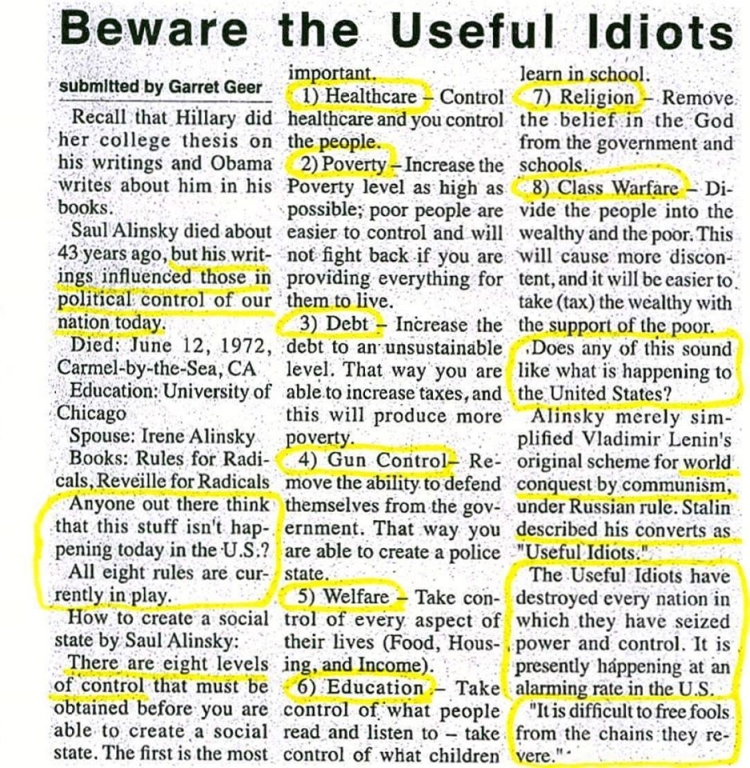Example of Critical Thinking
| |
Perhaps you've seen
the following document purportedly submitted by someone
named Garret Geer. It has made the rounds on the
internet a while back. We propose to look at it
using critical thinking. |
|
| |
 |
|
First level of analysis:
This is something Person A (Garret Geer) wrote about the
purported plan/statements of Person B (Saul Alinsky). So the
first thing we address is the fact is something Person A said
Person B said. This is important, because we need to know
who both of these people are:
Garret Geer: We
couldn't find anything about a Garret Geer who wrote this.
There are several Garret Geers identified in a Google search,
but other than the links that are to this article, none tell us
anything useful about the possible Garret Geer who wrote this.
Saul Alinsky: On the
other hand, there's a lot about Saul Alinsky. He was a
Chicago-born archaeology major. During the Great
Depression, he became concerned about workers in the United
States, so dropped out of graduate school. He first got
involved with the labor movement but then moved into community
organizing. It was in the latter field that he made his
mark, working from the late 1930s through the early 1970s as a
community organizer (first in poor areas of Chicago, and later
in various cities across the U.S.) He wrote and published
Reveille for Radicals and Rules for Radicals
to provide ideas and advice for community organizers who sought
to produce social change, particularly for the so-called
"working class." He was not a communist in the strictest
sense, but he did recognize that without more power for the
workers, capitalism could and probably would continuously
redistribute wealth into the hands of the wealthiest.
Second level of analysis: This level involves looking at
what is actually said in this document. The "author,"
Garret Geer lists "rules" purportedly from Saul Alinsky.
The first problem with this is that Geer does not cite sources.
Why is this important? Because if we had sources that we
could look up, we could verify that Saul Alinsky actually stated
these so-called "rules."

Whether, or not sources are cited is always very important.
The most trustworthy information we find on the internet is that
which has sources that are cited and that we can follow-up on.
It turns out that a review of Saul Alinsky's writings and
reports of things he said reveals that none of these statements
can be attributed to him. There is no evidence that he
ever wrote or said these "rules."
Third level of analysis: This level involves simply
looking at the statements themselves and deciding what, if any,
merit and/or validity they have, as well as where they might
actually have come from. Geer claims they are Lenin
derived, communist strategies implemented by Stalin.
Unfortunately, Stalinism is not and was not communism. So
that part is not valid. BUT there is some possibility that
these "rules" might well be something used by autocrats and
dictators.

In the end, no matter how valid the assertions are in this set
of rules, whether any of us agrees, or disagrees with them, in
themselves, is a matter of personal judgment. We think
they might well be a strategy used by a propagandist supporting
an autocratic government.
 To
read about critical thinking
To
read about critical thinking
 To
go to the Articles Page
To
go to the Articles Page